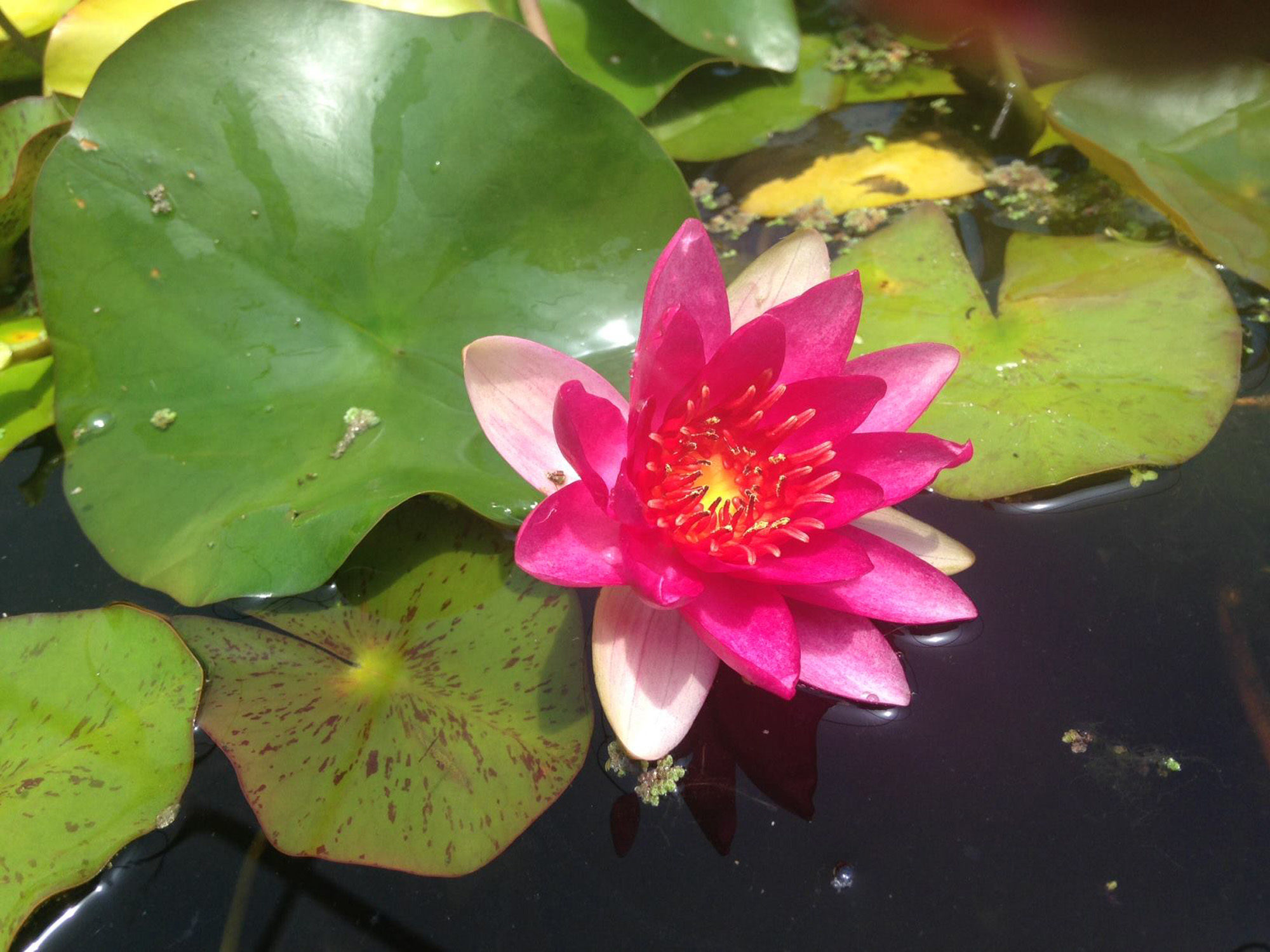 Few sights are more beautiful or refreshing in summer than a cool, clear pond with water lilies floating serenely on the surface. The hardy water lily, Nymphaea (after the water nymph of ancient Greek mythology), is the perennial celebrity of the water garden, and one of the most popular aquatic plants we have at Berkeley Hort. If you follow these simple steps, your water lily should bloom abundantly spring through fall, as long as water temperatures are above 60 degrees F.
Few sights are more beautiful or refreshing in summer than a cool, clear pond with water lilies floating serenely on the surface. The hardy water lily, Nymphaea (after the water nymph of ancient Greek mythology), is the perennial celebrity of the water garden, and one of the most popular aquatic plants we have at Berkeley Hort. If you follow these simple steps, your water lily should bloom abundantly spring through fall, as long as water temperatures are above 60 degrees F.
- REPOT: As soon as you get it home, repot the Nymphaea in a larger container. The roots need horizontal space, so I use plastic lattice baskets or even dishpans, about 18 in. across and 8 in. deep (I find gray ones are the least conspicuous). If you use a basket, line it with burlap to keep the soil from floating away. The best soil is the good old heavy clay we’re all “blessed” with here in the East Bay; avoid using commercial potting soils with organic matter that will rot in the water. Firm the soil tightly around the root ball, and cover the surface with a thin layer of gravel to keep nosy fish from disturbing things.
- FERTILIZE: Water lilies are heavy feeders, and won’t bloom unless they’re adequately nourished. Most commercial growers recommend slow-release fertilizer tablets, which can be pushed into the soil when planting. To feed plants that are already established in pots that are hard to reach in the middle of the pond, I make “mud balls,” consisting of Osmocote 14-14-14 time-release granules mashed into a clay-soil ball about the size of a walnut. If your aim is pretty good, you can toss them out into the lily baskets without tumbling in yourself! Don’t use regular granular fertilizer, which will cloud the water and may be harmful to fish.
- SUBMERGE: Most water lilies need to be at least 18 inches deep to bloom. Some of the smaller ones can tolerate a little less depth, and many can go deeper. If you’re planting your lily in a pond deeper than 2 feet, lower the plant slowly by starting it out on a stack of bricks, which can be removed one at a time as the stalks grow up to the surface. It’s best to submerge the lily when the water is warm, in a place that gets 6-8 hours of direct sunlight (in hotter climates, 4 hours may be sufficient for good bloom). The deeper the pot, the more hours of sunlight required.
- DIVIDE: You can greatly increase the number of blooms your lily produces by dividing it every 3 or 4 years, in early spring. When the pads start standing up above the water, you’ll know the plant is too crowded and needs dividing.
Water lilies come in a wide assortment of colors, shapes and sizes. They range from pure white through yellows, pinks, rosy reds, as well as the exotic “changeables,” which open yellow then melt to sunset colors and deeper reds. Flowers may be as small as pansies or bigger than baseballs, and may be shaped like stars, cups, powder puffs, or spiky cactus blossoms. Many are delightfully fragrant. We will continue to offer an ever-changing selection of varieties throughout the summer…stop by our aquatic plant section and see which ones we have in this week!


